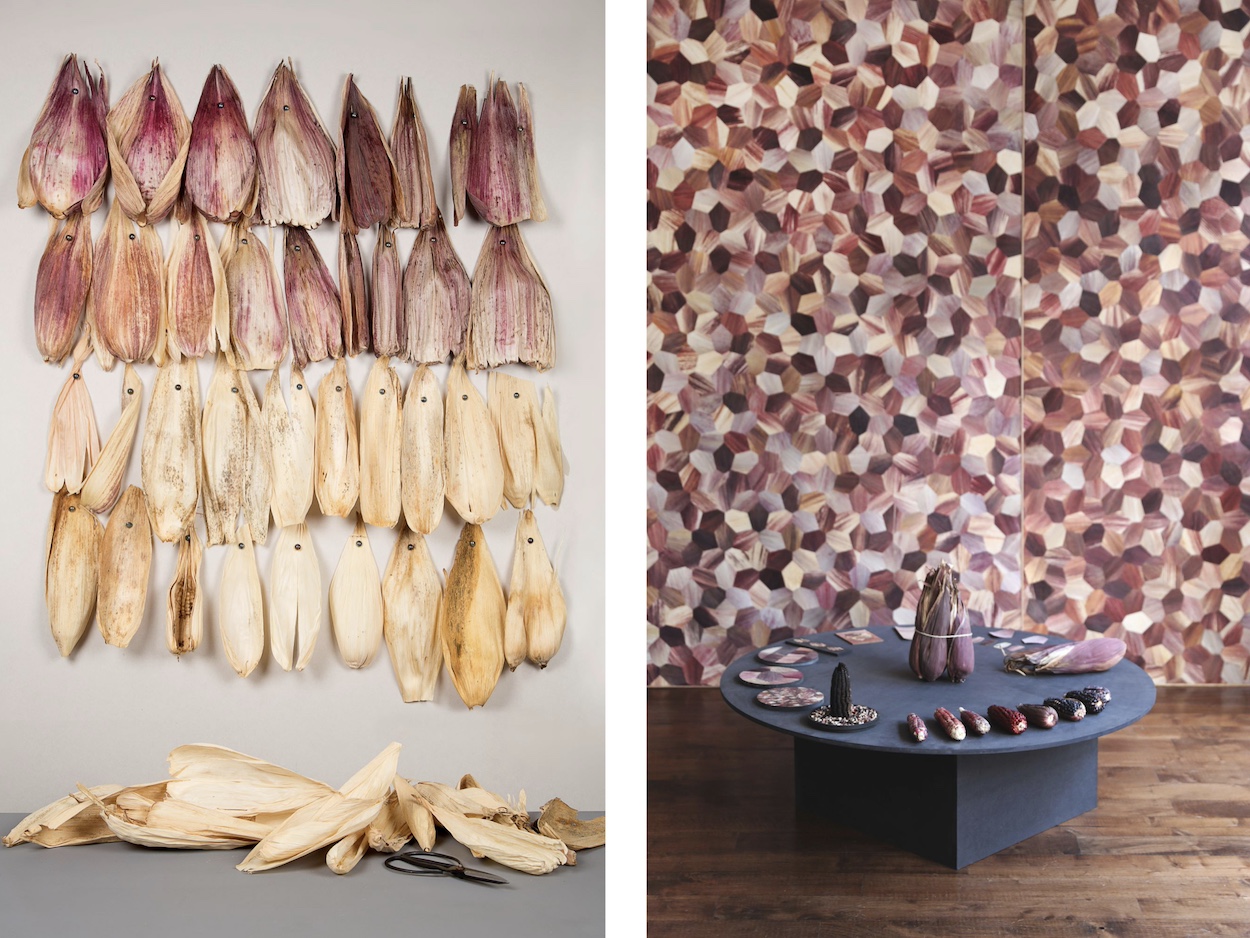In one of Maarten Baas’s most poignant works, two uniformed men wielding long-handled janitorial brooms continuously push garbage into the shape of analog clock hands over a 12-hour loop. Sweeper’s Clock, which the Dutch artist created in 2009, addressed the urgency of mitigating pollution and ecological degradation long before terms like “microplastics” or “greenwashing” entered the lexicon. Time is running out until full-fledged environmental calamity, Baas warned—and much of the onus rests on designers to innovate new production techniques that lessen the impacts of mass manufacturing through advances in reuse, upcycling, and biomaterials.
Sweeper’s Clock is a fitting backdrop for “Life Cycles: The Materials of Contemporary Design,” an exhibition at New York’s Museum of Modern Art that reveals the ingenious, unconventional ways that more than 40 designers have rethought how materials can be deployed for mass-market products in the name of environmental protection. Paola Antonelli, senior curator of architecture and design, pulled a multitude of such objects from the museum’s archives that marry traditional craft and advanced technology. They range from the zero-waste collaboration of Tomáš Gabzdil Libertíny’s honeycomb vase made by 40,000 bees to Nendo’s flowering Cabbage Chair, which repurposes leftover paper from the fabric-pleating process used for Pleats Please by Issey Miyake.
Antonelli also included lesser-known examples of material ingenuity, especially from the global south, such as Fernando Laposse’s Totomoxtle project that repurposes husks from heirloom varieties of Mexican corn into colorful tiles, and Indonesian designer Adhi Nugraha’s eyebrow-raising reuse of cow dung into lamps and speakers sporting a papier-mâché texture. Antonelli also tapped Ghanaian-Filipina artist Mae-Ling Lokko to create wall panels made of coconut shells and mycelium, produced entirely from natural energy. “There’s a lot happening in the non-Western/Northern hemisphere that can be educational for us designers to learn how to deal with climate change,” Antonelli says, “so we need to do more.” The show readies a hopeful eye for a symbiotic coexistence between humanity and nature—but reminds us to innovate our way there before the clock stops ticking.



